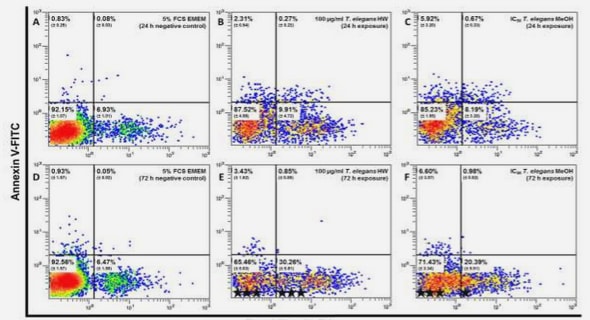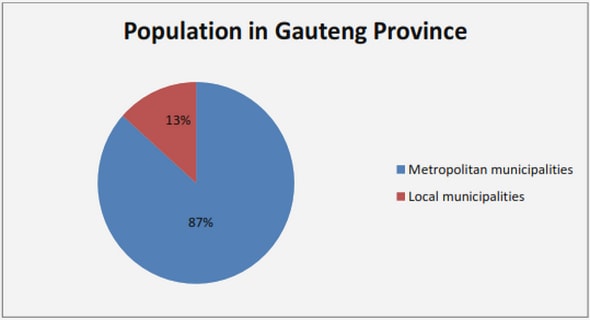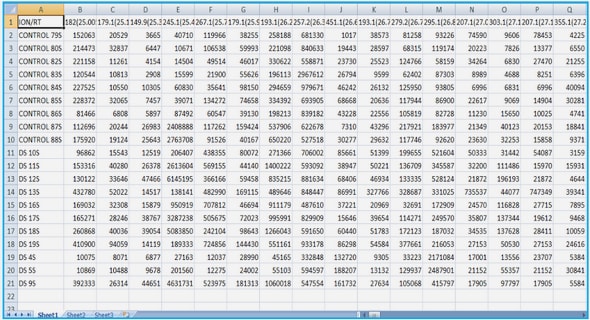Get Complete Project Material File(s) Now! »
Chapter 2 Literature Review
An extensive review of literature related to self-centering precast concrete walls was undertaken as part of this study. First, the performance of concrete walls and precast elements during historical earthquakes is described and the motivation behind the development of self-centering components is discussed. An examination of the development of self-centering wall systems is then outlined, along with the current code provisions for such systems and a summary of several experimental investigations that considered entire building response. Following this, both experimental and analytical studies investigating the dynamic behaviour of self-centering walls are detailed. Lastly, application of self-centering precast concrete systems in a number of buildings constructed around the world is described.
CONCRETE WALLS
Concrete walls provide excellent seismic resistance and are often used as the primary lateral force resisting system in a building. During historical earthquakes, structural walls were found to exhibit superior seismic performance compared with other structural components [2-1]. Structural walls can be constructed from either cast-in-place or precast concrete. Precast construction has additional benefits, including offsite fabrication, improved quality, and speed of construction. However, the application of precast technology in seismic regions was initially limited due to a lack of research and subsequent limits imposed by design codes. When investigating the performance of precast structures during previous earthquakes, precast concrete structural wall systems are found to perform well. Several precast parking structures suffered significant damage during the 1994 Northridge earthquake, but this damage was caused by incompatibilities between the seismic and gravity resisting components as well as inadequate floor diaphragms. No damage to the structural wall systems was observed [2-2]. Additionally, amongst the devastation of the 1995 Kobe earthquake, precast concrete buildings that used structural wall systems performed well with minimal damage observed.
The use of precast concrete in seismic regions has been restricted by several limitations. The poor performance of many precast frame structures in earthquakes, mainly due to poor construction practice and inadequate connection details, led to the practice of “cast-in-place emulation” [2-3, 2-4]. However, this reduced the economical advantage of precast construction, with complicated joint details often requiring “wet joints”.
ROCKING BEHAVIOUR
Evidence suggests that the use of a rocking mechanism for seismic protection dates back to the Greek era, where segmental construction of columns led to gap opening at the joints when subjected to lateral shaking during an earthquake [2-5]. However, only in the last 50 years has this rocking behaviour been investigated by modern structural engineers. Housner [2-6] is credited as the first significant researcher to study and model rocking behaviour as he attempted to explain why many tall slender structures, such as water tanks, had survived the 1960 Chilean earthquake. Predicting the response of a rocking block is complicated by the reduction in velocity that occurs when impact takes place at the rocking interface, referred to as contact or radiation damping. This reduction in velocity is poorly predicted when using complex finite element software, and the use of mathematical expressions derived from the equation of motion of a simplified model remains the most accurate method for predicting the response of a rocking block [2-7, 2-8]. Despite the modelling complexities, rocking mechanisms have been implemented into several structures as a form of base isolation for seismic protection. Two examples include the South Rangitikei rail viaduct in New Zealand, which was designed to allow for rocking of the piers on the pile cap [2-9] and the northern
Self-centering Concrete Systems
viaduct approach to the Lions Gate bridge in Vancouver Canada which was retrofitted to allow for pier rocking, which resulted in reduced the base shear demand [2-10].
SELF-CENTERING CONCRETE SYSTEMS
PRESSS
To overcome limitations which restricted the use of precast construction in seismic regions, a joint US-Japan research program entitled PRESSS (PREcast Seismic Structural Systems) was initiated in the early 1990’s [2-11]. Because the practice of cast-in-place emulation was not common in the US, research institutions and industry partners across the US focused on the development of new technologies which would improving the seismic behaviour of structures while retaining and maximising the benefits of precast construction. Following initial experimental tests conducted at the laboratory of the National Institute of Standards and Technology (NIST) [2-12] and an analytical investigation by Priestley and Tao [2-13], the use of unbonded post-tensioning to tie precast components together became the highlight of the US-PRESSS program. As well as tying the components together and providing moment resistance, the unbonded tendons are designed to remain elastic during an earthquake so that they provide a restoring force to bring the structure back to its original position. This leads to the desired self-centering behaviour which was described in Chapter 1.
The PRESSS research team developed several self-centering prestressed frame connections that were found during experimental testing to perform better than traditional cast-in-place connections [2-14-16]. Additionally, researchers at Lehigh University began analytically investigating the lateral force behaviour of unbonded post-tensioned concrete walls [2-17, 2-18]. The final phase of the PRESSS research program involved the design, analysis and experimental testing of a 60% scale prototype building, shown in Figure 2.1 [2-19, 2-20]. This test building included many of the frame, wall, and floor diaphragm technologies that were developed, including the jointed wall system which is discussed in more detail below.
Individual Walls
The simplest representation of a self-centering wall is a single precast concrete panel connected to its foundation using unbonded post-tensioning. Researchers at Lehigh University conducted a series of experimental tests on wall panels with unbonded post-tensioning to assess their monotonic and cyclic lateral force behaviour [2-21, 2-22]. The test walls behaved as expected, with flexural deformation concentrated at a single crack that opened up at the wall base. Confinement reinforcement was provided in the wall toe to ensure a stable response when large compressive strains developed and as a result the walls were able to maintain capacity up to between 3% and 6% lateral drift. A typical measured lateral force-displacement response from one of the tests is shown in Figure 2.2. Interestingly, the measured response does not follow the idealised bilinear-elastic hysteresis rule, which is often assumed for members with only unbonded reinforcement. Instead, the tests indicated a significant reduction in stiffness, and small amounts of hysteretic energy dissipation. Perez et al. [2-21] primarily attributed this behaviour to irrecoverable inelastic strains and spalling of cover concrete in the wall toe, as well as yielding and subsequent loss of initial prestress in the unbonded tendons. Perez et al. also calculated the behaviour of the test walls with reasonable accuracy using both simplified equations and a fibre based analytical model [2-23].
Self-centering Concrete Systems
Self-centering prestressed concrete masonry walls have also been investigated extensively at the University of Auckland. Laursen and Ingham began investigating the in-plane behaviour of post-tensioned masonry walls, conducting a series of experimental tests to verify the expected behaviour [2-24-26]. In general, masonry walls were found to behave in a similar manor to precast concrete walls, with flexural deformation concentrated at a single crack which opened up at the wall base. Following this, Wight et al. continued investigating the in-plane lateral behaviour of post-tensioned masonry walls, conducting both pseudo-static and dynamic shake-table tests [2-27, 2-28]. Wight also used finite element modelling to validate the performance and refine the design procedures for such walls [2-29]. Wight’s study concluded with the construction of New Zealand’s first post-tensioned concrete masonry house [2-30].
Wall Systems
Self-centering precast concrete walls utilising unbonded post-tensioning are excellent structural elements, able to resist lateral forces with minimal structural damage resulting. However, because the response is predominantly elastic the walls lack the ability to dissipate large amounts of energy which may be imparted to the structure during an earthquake. This results in large lateral displacements and high accelerations, which characterise poor seismic performance. To improve the performance of the wall and structure during large earthquakes, walls with unbonded post-tensioning are often coupled with supplementary energy dissipating elements. Several self-centering wall systems that are suitable for application in areas with high seismicity have been developed including jointed walls, hybrid walls, hybrid coupled walls, and other variations.
Jointed walls
The jointed wall system, shown in Figure 2.3, was developed and tested during the PRESSS research program discussed earlier. The system uses two or more precast concrete panels positioned side by side, all of which are post-tensioned to the foundation using unbonded tendons. Special shear connectors are placed along the vertical joints between the panels. When subjected to a lateral force, the walls behave in the same manner as an individual wall panel, with inelastic deformation concentrated at a single crack which opens up at the wall base. As the walls rotate and the base crack causes uplift, a relative vertical displacement occurs between adjoining panels, forcing the connectors to undergo large inelastic deformations. Through this hysteretic action the connectors are designed to dissipate large amounts of energy and are the primary energy dissipating source for the wall system. As with individual walls, the post-tensioning tendons are designed to remain elastic and provide a restoring force to self-center the structure.
Chapter 1 Introduction
1.1 Overview
1.2 Research Motivation and Objectives
1.3 Thesis Outline
Chapter 2 Literature Review
2.1 Concrete Walls
2.2 Rocking Behaviour
2.3 Self-centering Concrete Systems
2.4 Dynamic Behaviour
2.5 Application of Systems
2.6 Discussions and Conclusions
2.7 References
Chapter 3 Testing of Post-tensioned Wall Panels
3.1 Nominal Flexural Strength
3.2 Construction Details
3.3 Testing Details
3.4 Instrumentation
3.5 Test Results
3.6 Discussion of Results
3.7 Conclusions
3.8 References
Chapter 4 Analysis and Design of Post-tensioned Wall Panels
4.1 Finite Element Modelling
4.2 Predicting Nominal Flexural Strength
4.3 Conclusions
4.4 References
Chapter 5 PreWEC Connector Design
5.1 PreWEC Wall System
5.2 PreWEC Connector Requirements
5.3 Possible Types of Connector
5.4 Finite Element Modelling
5.5 Experimental Validation
5.6 Large-scale PreWEC Test
5.7 Conclusions
5.8 References
Chapter 6 Finite Element Modelling of the PreWEC System
6.1 Model Formulation
6.2 Confined Concrete
6.3 Modelling of PreWEC
6.4 PreWEC Cyclic Response
6.5 Modified PreWEC Designs
6.6 Influence of Connectors
6.7 PreWEC Core Wall System
6.8 Conclusions
Chapter 7 Analysis of Residual Drifts
7.1 Background
7.2 Static Analysis of Flag-shape Response
7.3 Residual Drift Limits
7.4 Dynamic Analysis
7.5 Design Procedure
7.6 Implications to Other Systems
7.7 Conclusions
7.8 References
Chapter 8 Analysis of a Self-centering Building
8.1 Introduction
8.2 Wall-to-Floor Connection Details
8.3 Prototype Building
8.4 Finite Element Modelling
8.5 Dynamic Analysis
8.6 Conclusions
8.7 References
Chapter 9 Conclusions
9.1 Individual PT Walls – Chapters 3 & 4
9.2 PreWEC System – Chapters 5 & 6
9.3 System Behaviour – Chapters 7 & 8
9.4 Recommendations for Future Research
GET THE COMPLETE PROJECT


